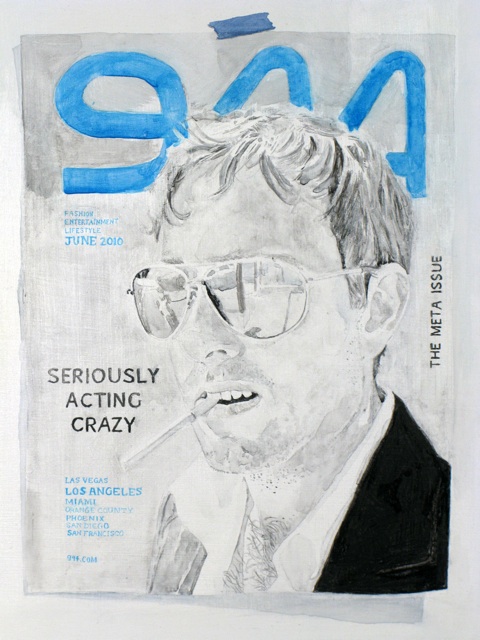
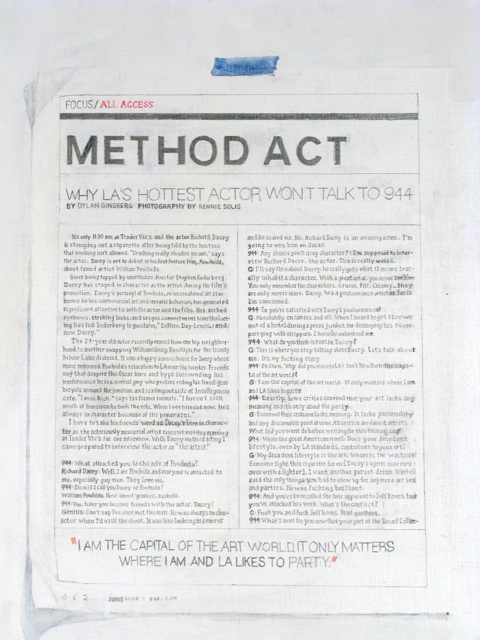
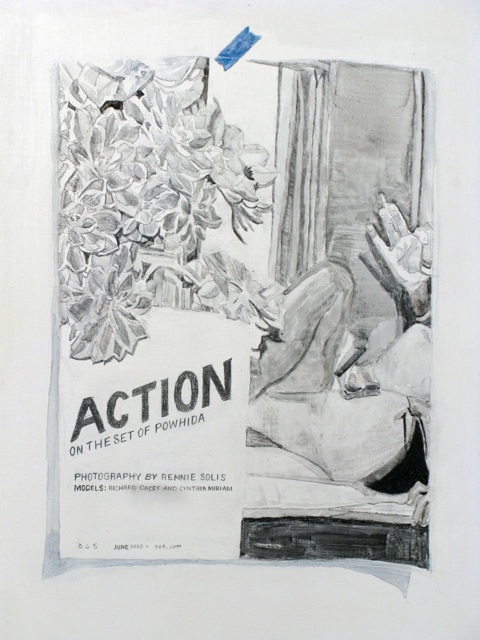
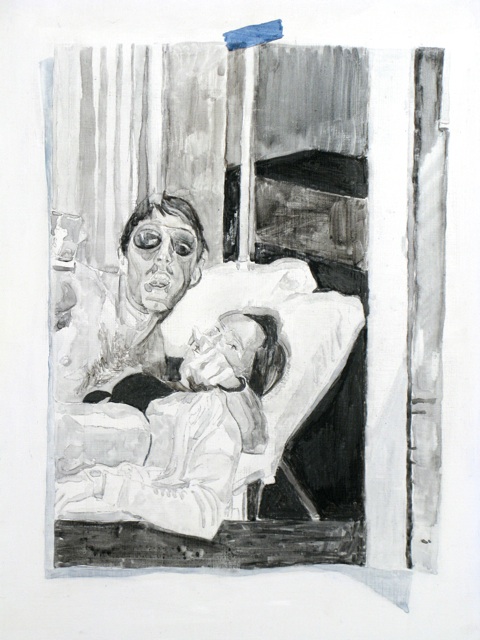

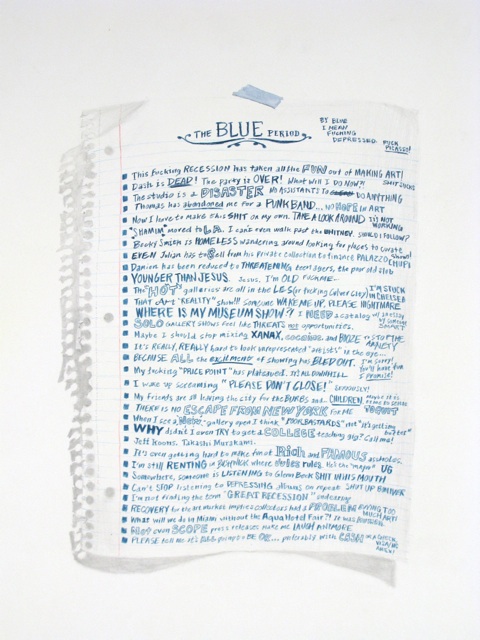
New show coming up in L.A.
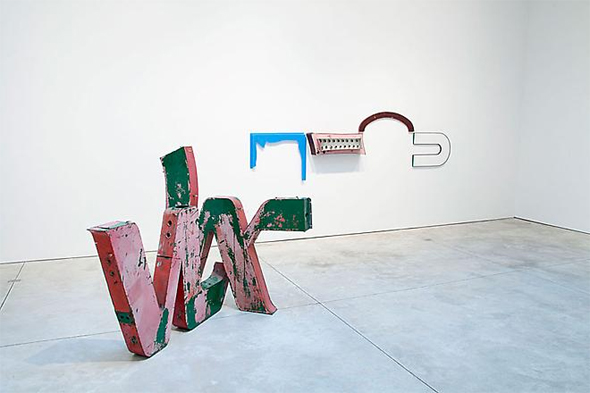
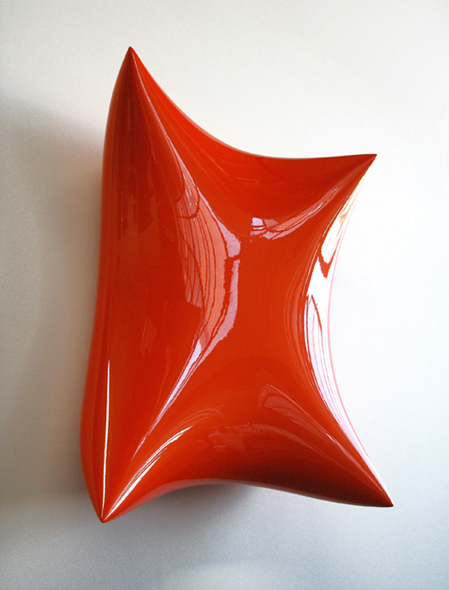
Thatcher Projects is pleased to announce the opening of Shift an exhibition of new work by Bill Thompson. From curvilinear and cloud-like to pointedly flexed and bowing, Thompson’s colorful wall structures combine painting and sculpture into a unique minimalist art form.

Maya Gold / Untitled, 2009 / Oil on canvas / 55 x 94 inches / MG-020
|
This series of paintings is greatly influenced by the artist’s time spent living in Israel and her proximity to the sea and urban landscape. In some works, a female figure dressed in a bikini the colors of the Israeli flag stands alone in a vast empty field of muted gray or blue. She is throwing a life preserver out into the empty space or crouching on the shore arranging the seashells on the sand in futile exercises to call for help. In one work the same figure holds a large beach umbrella, attempting to pierce the ground with its tip seemingly unaware that she is standing on a brick walkway. In some works the figure is unrepresented and its presence, either male or female, is completely obstructed by open umbrellas that play across the surface of the canvas like a bag of scattered marbles. The artist composes the works so that they are a visual trick to behold, undefined, offering a several meanings at once.
|

Maya Gold / Untitled (detail), 2009 / Oil on canvas / 55 x 94 inches / MG-020

Maya Gold / Untitled, 2009 / Oil on canvas / 58 x 69 inches / MG-029
|
The title of the exhibition, Wake, is meant to conjure the same curiosity as to which particular meaning it denotes. All at once, Wake is a reference to the shape of water when it parts behind a boat after it passes, the time after dreaming when we slip into present consciousness, and the services that are attended by friends and family after the passing of loved one. The viewer, hovering, peering down ghostlike above the world below is left to guess from where they are supposed to be viewing this world. It is the ambiguity of the moment, the uncertainty of the time that the artist captures on the canvas.
|

Maya Gold / SOS, 2009 / Oil on canvas / 59 x 79 inches / MG-026
|
The surfaces of the canvas, although rich with detail are surprisingly flat. The artist begins by laying in a translucent wash of color over the white canvas to indicate the sky, water or brick. Each element, the background shadow or figure, is painted from start to finish in one sitting to keep the texture of the paint and the canvas even and flat. The figures or subjects are painted in last with delicate and almost photographic realism. The artist does not however take her subjects directly from photographs and instead works from various imagery and is most reliant on her own memory. In the end, what we are given is a composition that is contrastingly different in its appearance and meaning, at once minimal in its imagery but also riddled with the clues to a deeper story and symbolism.
|

Maya Gold / SOS (detail), 2009 / Oil on canvas / 59 x 79 inches / MG-026
|
Maya Gold lives and works in Tel Aviv, Israel. The artist received her Bachelors of Art at the Bezalel Academy of Art & Design in Tel Aviv and continued with post graduate studies at the Slade School of Fine Art, University College of London and the Bezalel Academy. The artist was the youngest recipient of the Gottesdiener Award, which resulted in a solo exhibition of her work at the Tel Aviv Museum of Art. The artist has exhibited previously in Tel Aviv, Israel and this is her first exhibition in New York.
|
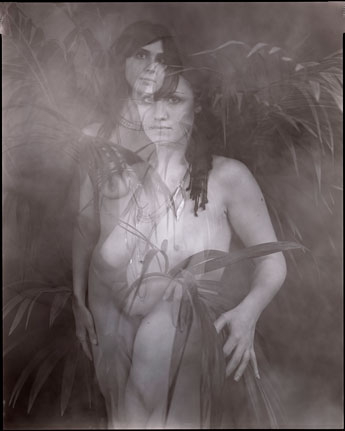
David Kordansky Gallery is pleased to announce Other Aspects, the gallery’s first exhibition with Rashid Johnson. The opening reception will be on Friday, October 30 from 6 to 9pm, and the exhibition will be on view through January 16.
While Johnson’s gravitation toward some materials (shea butter, record covers, incense) seems to suggest specific signifiers or pop cultural references, he treats these merely as starting points, seeking to discover larger, even universal, themes that might be latent in their DNA. As a result, the selection of materials becomes the foundation of a personal cosmology that bears traces of its source materials while simultaneously transcending them.
This process is well illustrated by the sculptures, both wall-based and freestanding, that Johnson has equipped with working CB (community band) radios and/or steel and brass antenna-like constructions. Part reliquary, part painting, part assemblage, and part pirate radio station, and indebted to cultural figures as diverse as Carl Andre, Joseph Cornell, Eldridge Cleaver, and Eric Dolphy (the exhibition’s title is drawn from Dolphy’s 1960 album of the same name), these sculptures are representative of attempts to reach out into the unknown, to acknowledge the confines imposed by received notions of identity and thereby escape them.
Just as the works’ materiality is an assemblage of distinct attitudes toward the symbolic potential of the physical world, the poetic associations they call into play are indicative of a mystical, exploratory countenance. An example of this is Johnson’s conflation of racial otherness, fear of the unknown and the intimidating existential unknown exemplified by our views of outer space, extra-terrestrial life and cosmological distances.
CB radio in particular offers a poignant metaphor for achieving a measure of anonymity in a densely coded social context. As an example of a proto-internet technology prevalent in the 1950s, 60s, and into the 70s, CB allowed (and in some cases continues to allow) its users to function in a community free from hierarchical assumptions based on physical characteristics; it opens a path of escape from the narrowly drawn confines of established identities.
The sculptures are also waypoints in an ongoing narrative that Johnson has been developing over the course of several years’ worth of work, in which he develops environments for, and images of, a mysterious group of individuals once referred to as ‘The New Negro Escapist Social And Athletic Club.’ In Other Aspects, Johnson has exchanged the photographic portraits of hypothetical members of the ‘Escapist’ club for black-and-white photographs of naked white women. These female figures, shrouded in smoke, evoke pin-ups—even their scale seems to recall the calendars or advertisements frequently seen in automotive garages or other predominantly male workspaces—as well as stand in for the male subjects whose images they replace. Both the subjects and objects of a sexualized, racialized gaze exist in a continuum of image making in which it becomes difficult to tell who is looking at whom.
In keeping with the hidden neurotic ramifications of such a gathering space, one of the sculptures includes four, chaise-like leather benches that recall couches from a psychiatrist’s office. Whoever the users of this hypothetical space are, their repressed anxieties have been fully integrated into its design.
In 2008 and 2009, Rashid Johnson was the subject of one-person exhibitions at Sculpture Center (Long Island City, New York) and the Kunstmuseum Magdeburg (Germany). Johnson has been included in several of the seminal exhibitions of the last decade, including Freestyle (Studio Museum, New York, curated by Thelma Golden), A Perfect Union…More or Less (Renaissance Society, Chicago, curated by Hamza Walker), and 30 Americans (Rubell Family Collection, Miami). In 2010 his work will be on view as part of From Then To Now: Masterworks of African American Art (MOCA Cleveland, curated by Margo Crutchfield). Johnson’s work is part of the collections of the Whitney Museum of American Art, the Art Institute of Chicago, the Brooklyn Art Museum, and the Studio Museum, among other public and private institutions. He lives and works in New York.